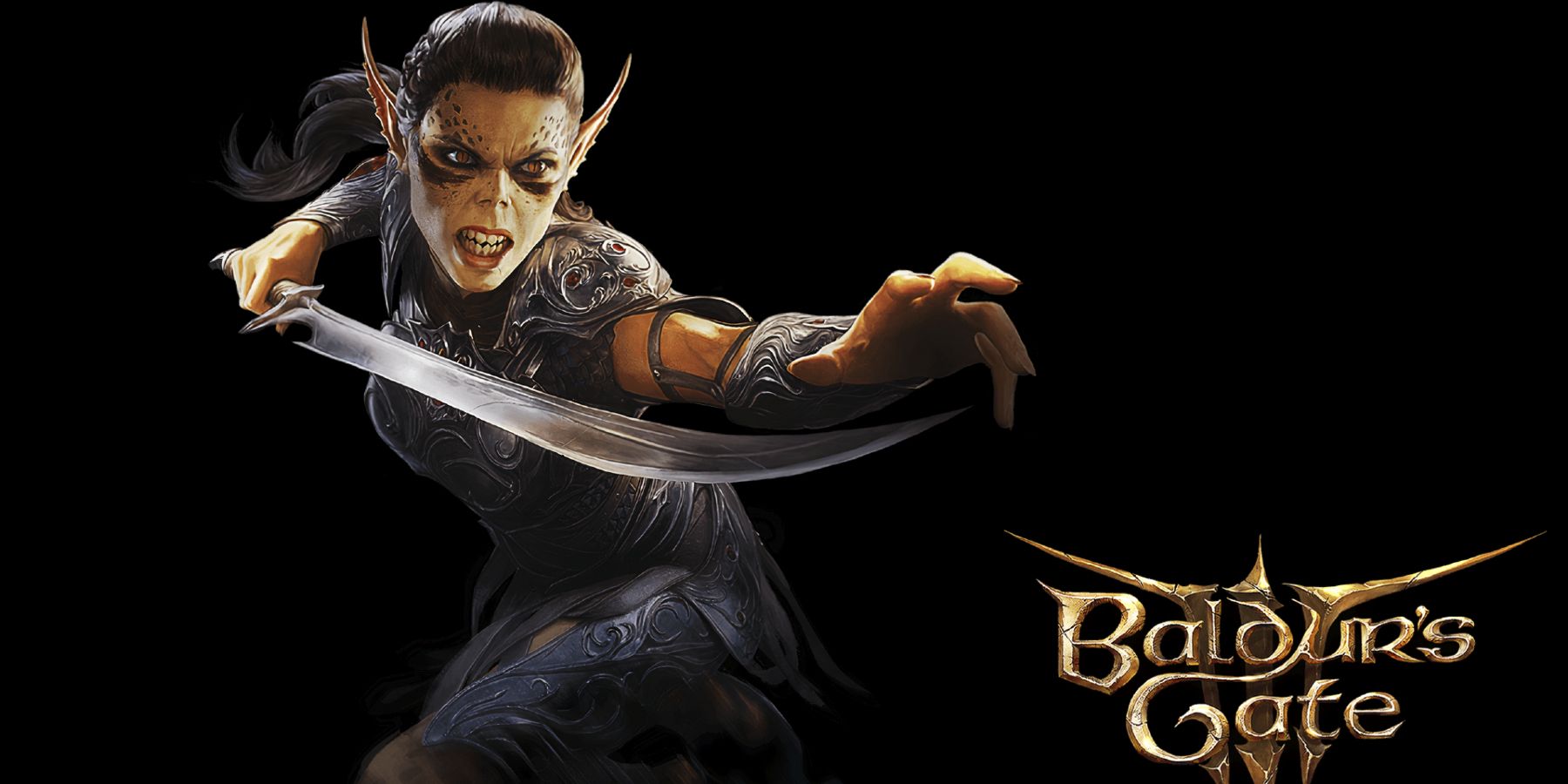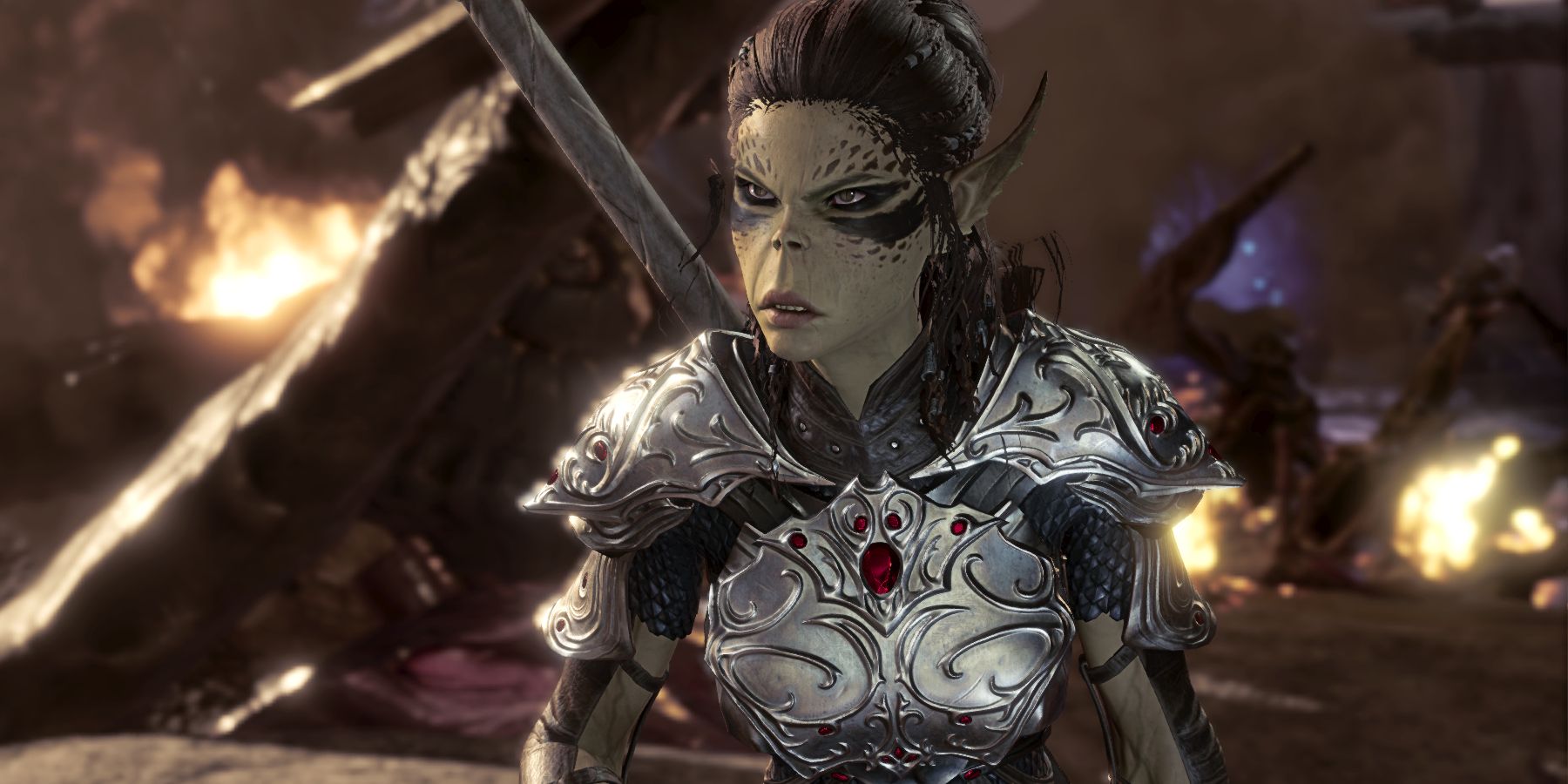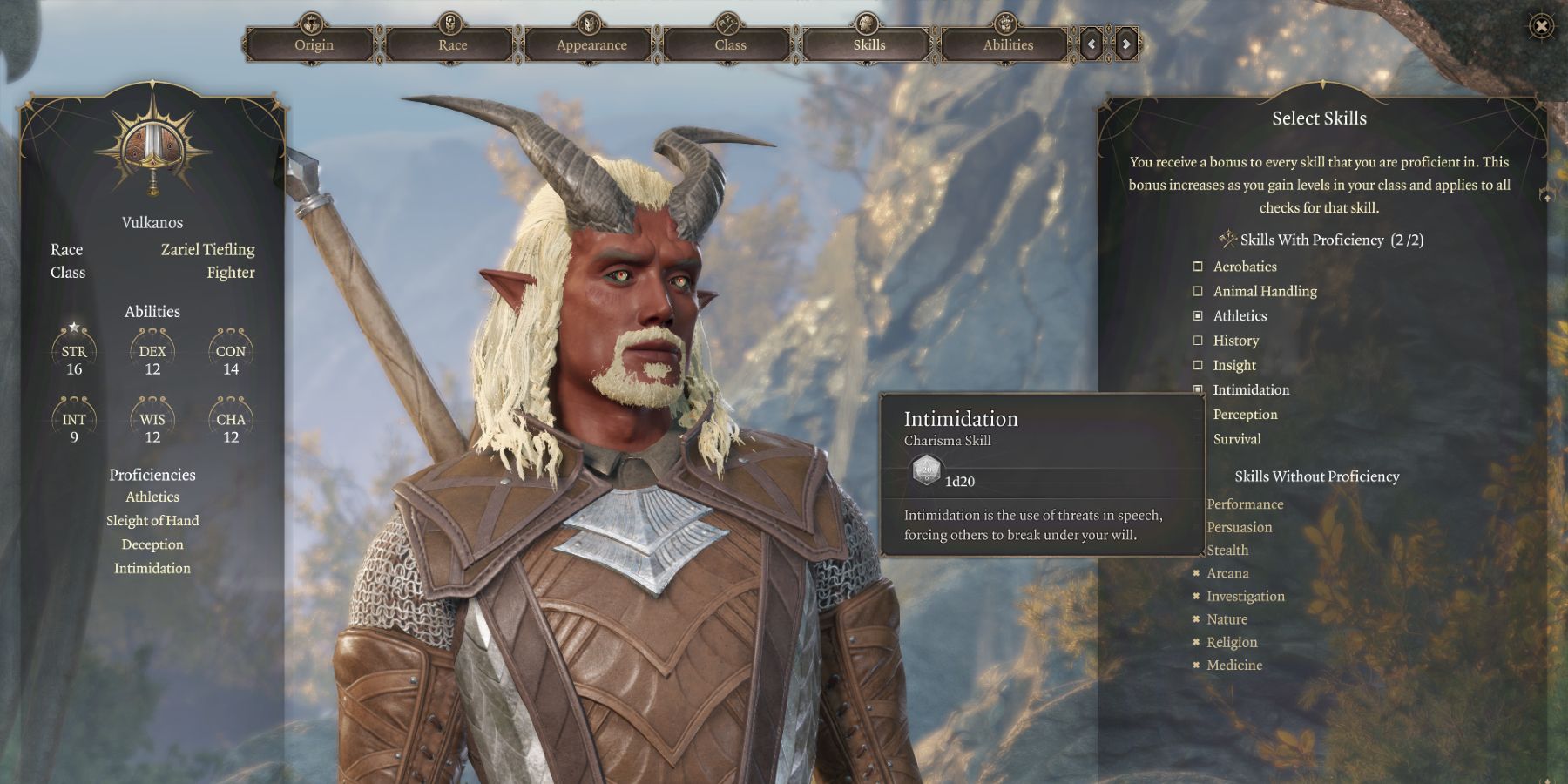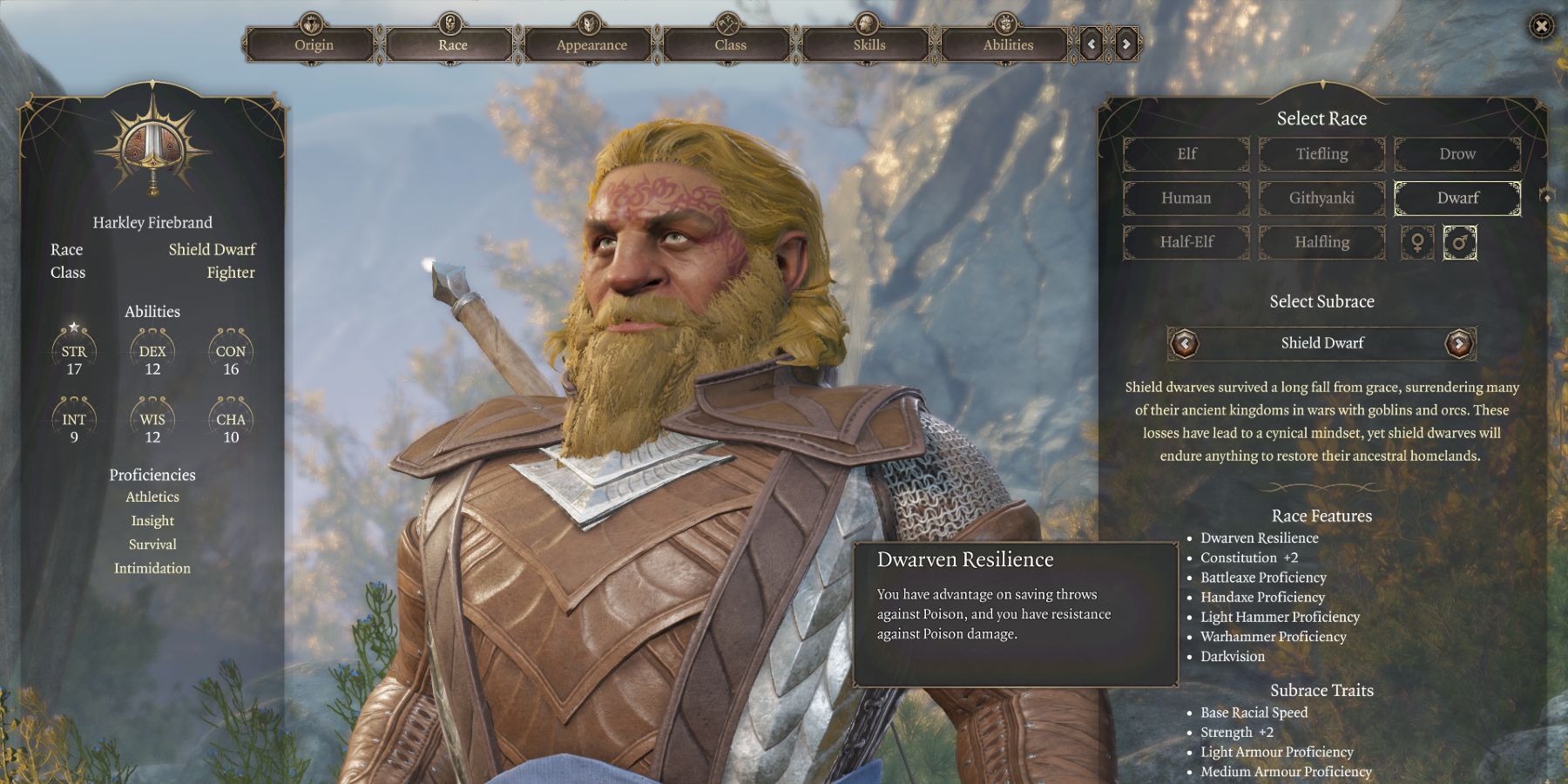How has Baldur's Gate III put a new spin on the most classic of D&D classes, the Fighter? Fighters in D&D have always been the most classic, next to paladin and wizard, but this can make them seem boring to the standard player. While not having the most choices out of the classes, this class is a powerhouse.
As this article is written with the early access version of the game in mind, Fighters may gain options before the full release arrives. However, the following options covered are between what is currently available and how to make the best use of the options available to players. What type of fighter is worth fighting for?
Races and Subraces for Fighters in Baldur's Gate III
Race and subrace choices have a big impact on the starting ability scores of a character. Due to this, the player's choice in race can help define what type of fighter they will grow into. A fighter's most prominent ability scores are the Strength and Constitution. With this in mind, here are the races that would best fit a fighter.
Zariel Tieflings, Humans, Githyanki, Shield Dwarves, and Strongheart Halflings are the best race choices. Zariel Tieflings start with a +1 in Strength and a +2 in Charisma. Humans start with a +1 to all of their ability stats. Githyanki get a +1 to Intelligence and a +2 to Strength, as well as several armors and weapon proficiencies. Shield Dwarves get a +2 to Constitution and +2 to Strength with a couple of weapon and armor proficiencies as well as Dwarven Resilience. Finally, Strongheart Halflings get the Lucky trait, Strongheart Resilience, with a +1 to Constitution and +2 to Dexterity.
Out of these options, for the most classic of a Fighter, players should stick with either a Githyanki or Shield Dwarf. However, the Zariel Tiefling would make a good leader as both a fighter and a talker, while the Strongheart Halfling could make a great acrobatic and feisty fighter. Any of these options would boost the fighter class.
Origins and Skill Selection for Fighters in Baldur's Gate III
Fighters get the choice of two skill proficiencies out of this list: Acrobatics, Animal Handling, Athletics, History, Insight, Intimidation, Perception, and Survival. For a Zariel Tiefling fighter, players may want to choose things that boost more of the conversationalist like Animal Handling, Insight, or Intimidation. In the case of a Strongheart Halfling, skills like Acrobatics, Athletics, Perception, and Survival might be more to their speed. Or for a more standard fighter Athletics, Perception, and Survival are likely to be great choices.
Keep in mind though, that the player also gets an origin. These origins act as the player's sort of background and determine two skill proficiencies for them. As skill proficiencies cannot overlap, players should think over exactly what combination they want. For a more standard fighter background, players may choose something like Sailor, Soldier, Outlander, or Folk Hero. However, if the player wants to be good with both fighting and healing, a background like the Hermit, Acolyte, or Sage may be more up their alley. Or in the case of a more devilish fighter, backgrounds like Criminal, Charlatan, or Entertainer could be good options.
Fighting Style, Abilities, and Subclasses in Baldur's Gate III
As each class levels up within the game, they gain new abilities to choose from. Starting out, Fighters get the Second Wind feature which is a self-heal for 1d10 +the fighter's level in hit points. SecondFighters also get the Fighting Style feature. There are six available fighting styles for fighters, which enhance their abilities with a certain weapon type.
Fighting Style:
- Archery - Gains a +2 on all attack rolls made with a ranged weapon.
- Defense - Gives the player an extra point to their armor class when wearing armor.
- Dueling - When the player is only holding a weapon in one hand, with nothing in the other, they get a damage bonus of two with that weapon.
- Great Weapon Fighting - When the player rolls a 1 or 2 on the damage die with a two-handed or versatile weapon, they can re-roll the damage.
- Protection - Allows the player to jump between an enemy and an ally as a reaction if they are within five feet and if the player is wielding a shield.
- Two-Weapon Fighting - When using two weapons to fight, the secondary weapon gets additional damage equal to the player's ability modifier that matches the weapon.
At second level, Fighters gain the Action Surge class feature. This allows the player, once per long or short rest, to be able to take two actions in a turn. At third level Fighters gain their martial archetype. Fighters currently get two archetypes to choose from, Battle Master and Eldritch Knight.
The Battle Master gains three of four passive abilities that rely on the player's four Superiority Dice. These abilities are Menacing Attack, Pushing Attack, Rally, and Riposte. Menacing Attack allows the fighter to spend a Superiority die to deal 1d6 +3 +1d8 points of piercing damage in an attack while frightening the target. Pushing Attack allows the fighter to spend a Superiority due to deal 1d6 +3 +1d8 piercing damage with the possibility of also pushing the target back. Rally allows the fighter to use a Superiority die to heal a teammate 8 hit points. Riposte allows the fighter to use a Superiority die to retaliate as a reaction when an enemy attacks the player dealing 1d6 +3 +1d8 piercing damage. The Battle Master also gains a better jump.
The Eldritch Knight works as a sort of wizard, fighter cross-over with more of a focus on melee fighting than a Warlock would have. The player gains two cantrips and three first level spells from the wizard spell list. Two of the first level spells that a player can pick are more specific to the subclass.
Baldur's Gate III early access is now available on PC.




